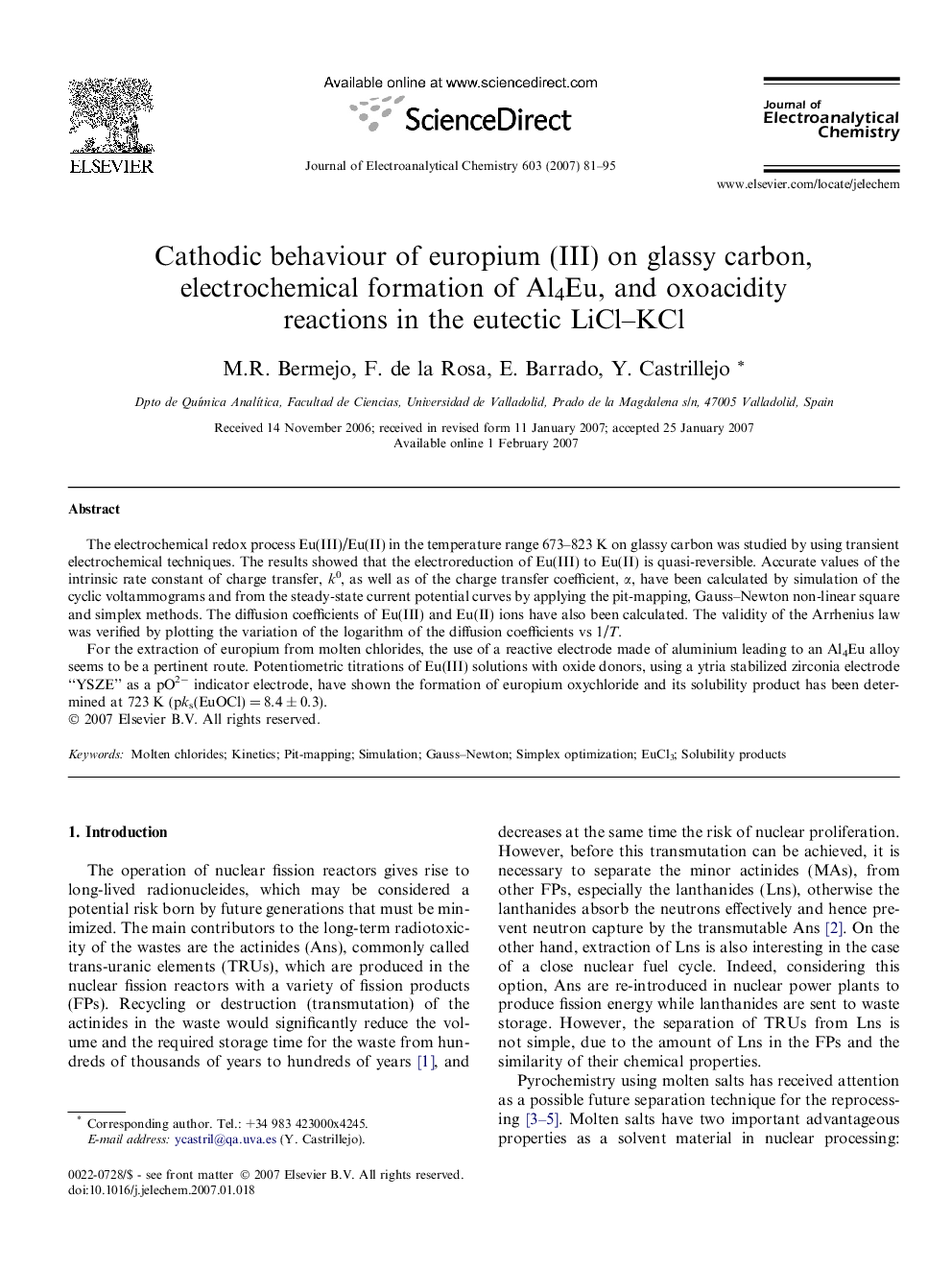| Article ID | Journal | Published Year | Pages | File Type |
|---|---|---|---|---|
| 220929 | Journal of Electroanalytical Chemistry | 2007 | 15 Pages |
The electrochemical redox process Eu(III)/Eu(II) in the temperature range 673–823 K on glassy carbon was studied by using transient electrochemical techniques. The results showed that the electroreduction of Eu(III) to Eu(II) is quasi-reversible. Accurate values of the intrinsic rate constant of charge transfer, k0, as well as of the charge transfer coefficient, α, have been calculated by simulation of the cyclic voltammograms and from the steady-state current potential curves by applying the pit-mapping, Gauss–Newton non-linear square and simplex methods. The diffusion coefficients of Eu(III) and Eu(II) ions have also been calculated. The validity of the Arrhenius law was verified by plotting the variation of the logarithm of the diffusion coefficients vs 1/T.For the extraction of europium from molten chlorides, the use of a reactive electrode made of aluminium leading to an Al4Eu alloy seems to be a pertinent route. Potentiometric titrations of Eu(III) solutions with oxide donors, using a ytria stabilized zirconia electrode “YSZE” as a pO2− indicator electrode, have shown the formation of europium oxychloride and its solubility product has been determined at 723 K (pks(EuOCl) = 8.4 ± 0.3).
